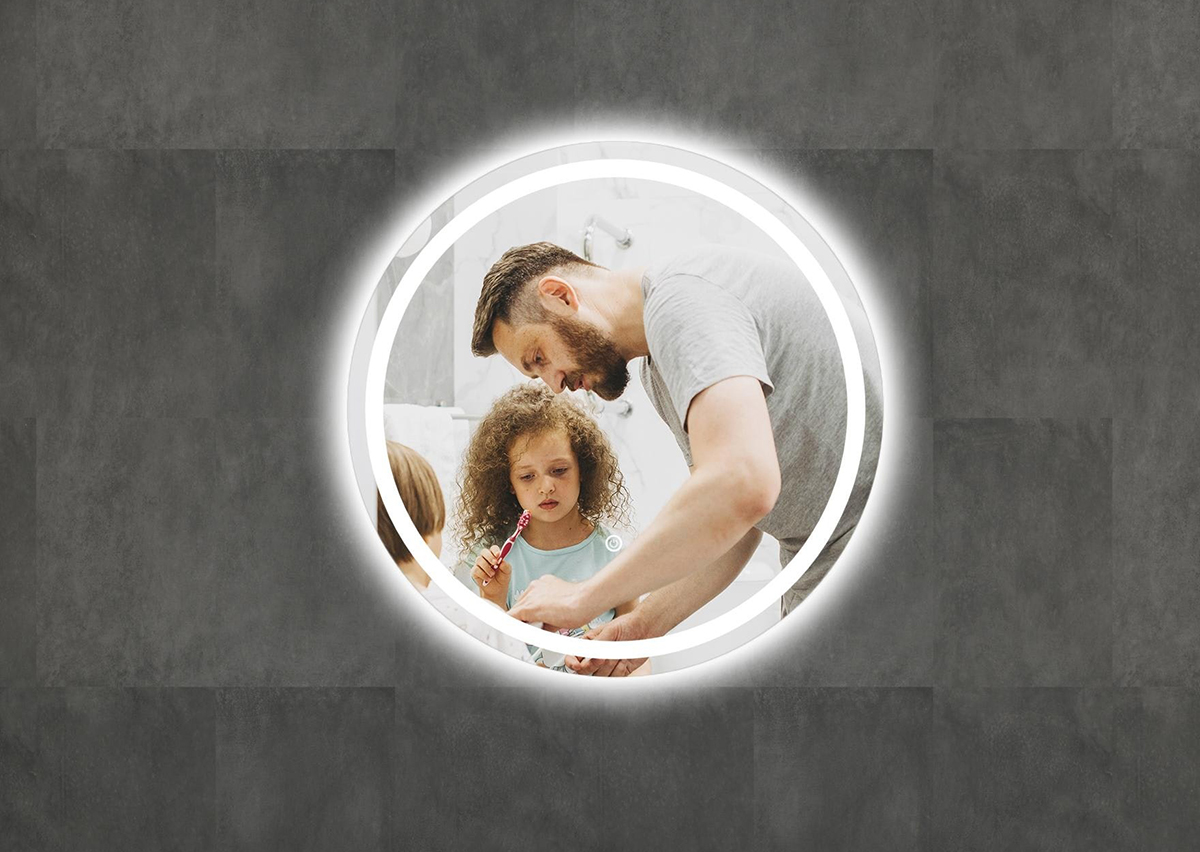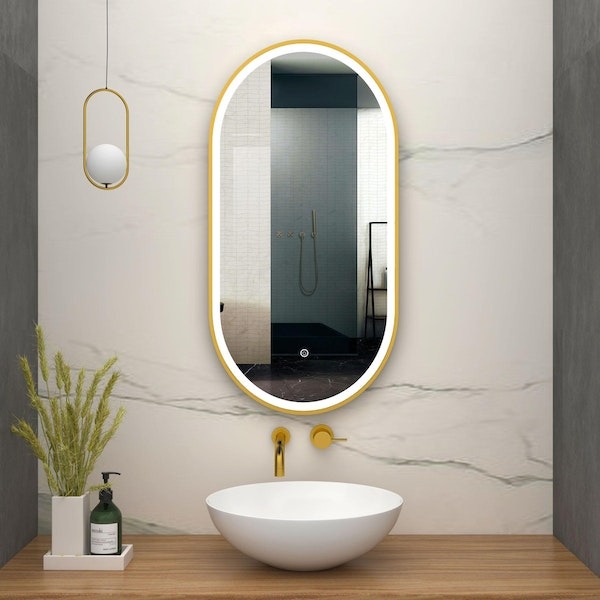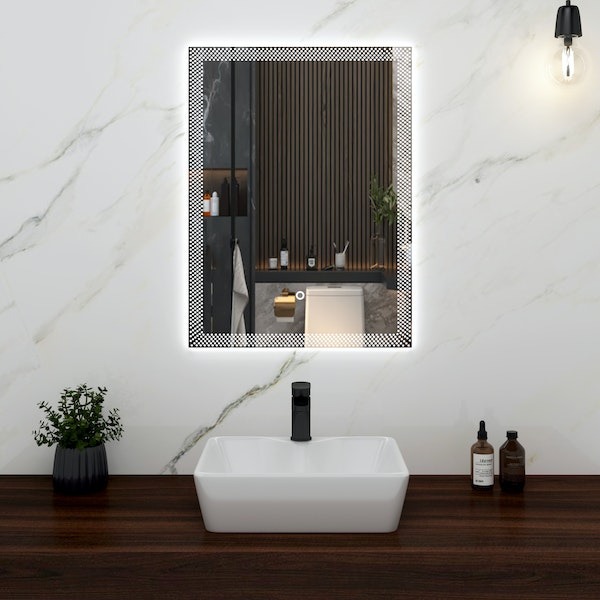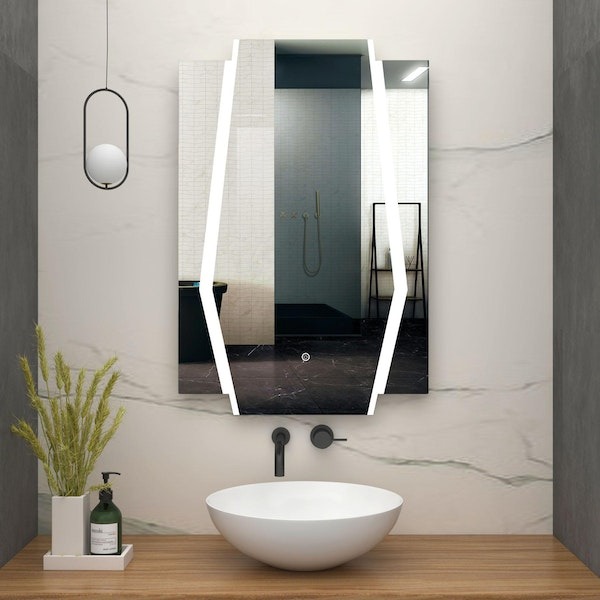
A bathroom mirror is an essential component in any bathroom renovation. Serving both functional and aesthetic purposes. A well-placed mirror should add a touch of style and elegance to your overall design.
Installing a bathroom mirror may seem like a daunting task, but with the right tools and our handy guide to help you - you’ll be admiring your perfectly hung mirror in no time.
Tools and Materials Needed
Before you begin the installation process for your bathroom decor, it’s important to gather all the necessary tools and materials needed for DIY home improvement.
Here's What you’ll Need:
- Tape measure
- Pencil or marker
- Level
- Drill
- Screwdriver
- Wall anchors (if necessary)
- Mounting bracket
- Screws
- Bathroom mirror
Precautions and Safety Tips
Turn off the power supply to any electrical outlets near the installation area to avoid potential hazards.
Use caution while handling tools and sharp objects to prevent injuries.
Preparing the Wall for Installation
Before installing your new mirror, it’s time to prepare the wall to ensure a secure and level placement.
Measuring and Marking the Wall
Use a tape measure to determine the desired height and position of the mirror on the wall. Mark the centre point and any additional reference points you may need.
Checking for Level and Stud Location
Place a level against the wall to ensure it’s straight. Additionally, use a stud finder to locate the studs behind the wall. Mark the stud locations as they will provide the most secure anchor points for your mirror.
Installing Wall Anchors, if Necessary
If there are no studs where you want to hang the mirror, you can install wall anchors. Drill pilot holes into the wall at the marked anchor points, insert the wall anchors and tap them gently into place using a hammer.


Installing the Mounting Bracket
The mounting bracket will provide support for your bathroom mirror. Follow these steps for a secure installation.
Aligning the Bracket with the Marked Points
Hold the mounting bracket against the wall, and align it with the marked points. Ensure it is level and centred according to your measurements.
Drilling Holes and Securing the Bracket
Using a drill, create holes through the bracket’s mounting holes and into the wall. Insert screws through the bracket and into the wall, tightening them securely. Double-check the level and stability of the bracket.


Hanging the Bathroom Mirror
Don’t forget when you’re hanging a mirror, you need to have the mounting bracket in place.
Lifting and Positioning the Mirror
Carefully lift the mirror and position it onto the mounting bracket. Enlist the help of a second person if needed to ensure the mirror is held steady and level.
Securing the Mirror to the Bracket
Once the mirror is positioned correctly, locate the mounting holes on the back of the mirror and align them with the screws on the bracket. Insert screws through the holes and into the bracket, tightening them to secure your mirror in place.
Adjusting and Leveling the Mirror
Check the level of the mirror and make any necessary adjustments by loosening or tightening the screws on the bracket. Ensure the mirror is straight and aligned with your reference marks.
Final Touches and Maintenance
Now you’ve hung your new bathroom mirror, it’s time to take care of some final touches.
Cleaning the Mirror and Surrounding Area
Once the mirror is securely installed, take a moment to clean it, along with the surrounding area. Use a non-abrasive glass cleaner or a mixture of vinegar and water to wipe away any fingerprints, smudges, or dirt.
Always be gentle when cleaning your mirror to avoid scratching the surface.
Tips for Maintaining Your Bathroom Mirror
Use our tips to keep your bathroom mirror looking its best, for longer:
- Clean Regularly: Wipe the mirror regularly with a soft, lint-free cloth to remove dust and prevent buildup.
- Avoid Harsh Chemicals: Refrain from using abrasive cleaners or solvents that can damage the mirror’s surface. Stick to mild, non-abrasive cleaning solutions.
- Prevent Moisture Damage: Keep the mirror dry and free from excessive moisture. Wipe away any water droplets or splashes immediately to prevent water spots or damage.
- Use Caution with Decorative Elements: If you plan to attach any decorative elements or accessories you find in other bathroom mirror ideas, ensure they are securely fastened and won’t damage the mirror’s surface.


Conclusion
A Bathroom mirror installation can enhance the functionality and aesthetics of your bathroom. By following our step-by-step process of mirror installation tips, you can successfully install a bathroom mirror without the need for further help.
What’s more, our tips on maintenance and cleaning will keep your mirror looking pristine for years to come.
All that’s left to do is enjoy the functional and visual benefits of your newly installed bathroom mirror!
